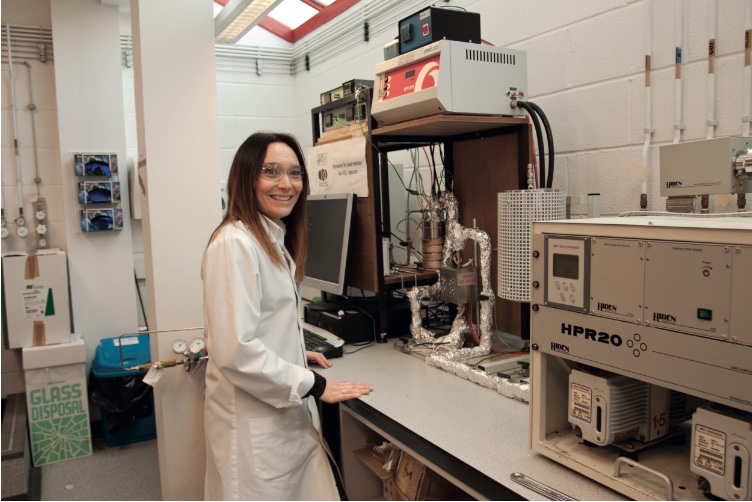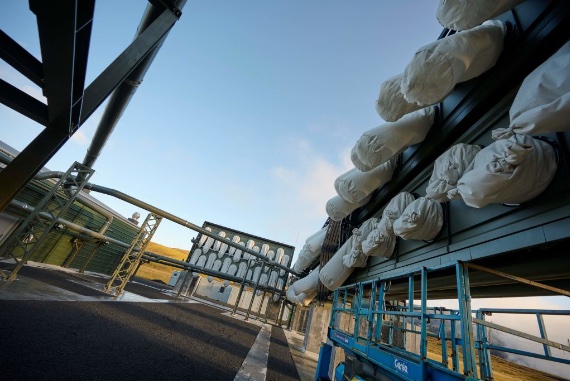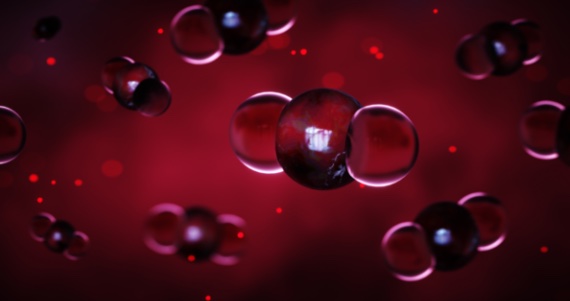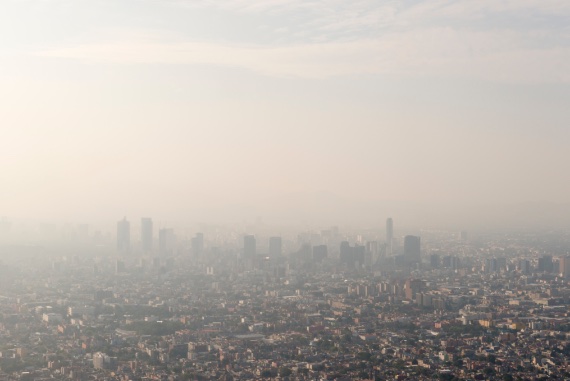It is clear to humanity that our planet has lost the balance it needs to survive on its own. This has been the case for more than 30 years. It is also clear that large expanses of forest, which once absorbed carbon dioxide (CO2), are now beginning to emit this gas due to the scourge of wild fires that plague us every year, and that the precious fields of Posidonia oceanica, the sea grass found at the bottom of the Mediterranean Sea, are being depleted and are no longer able to absorb as much carbon dioxide as they once did. Faced with this situation, humanity has no choice but to take matters into its own hands and devise systems to offer a helping hand to the natural world we have helped to degrade. But apart from the well-known political agreements between countries to reduce CO2 emissions (Kyoto Summit, Paris, Egypt…), science has also been working to develop materials and systems to help capture carbon dioxide.

When Susana García López (Tíos, Asturias, Spain, 1977) finished her degree in chemical engineering and began to learn about the possibilities surrounding the science related to climate change, the reduction of CO2 emissions into the atmosphere and its link with the use of fossil fuels, she made up her mind. This was the field she was going to pursue. It was 2005. “At that time, CO2 capture and storage processes were already being researched, and I found it a fascinating technological challenge,” she recalls. “So I decided to devote myself to this research and started my PhD studies in CO2 storage. Since then, I have been researching and working on aspects related not only to storage, but also to CO2 capture and utilisation.” The talented researcher says she has “always been curious to understand and explore how processes and systems work.”
The education of our society regarding this issue is crucial because its solution requires responsibility—individual and collective—and a clear awareness of the problem
Almost 20 years later, Susana García López is focused on researching new materials and systems to capture CO2 from the atmosphere. She is Professor of Chemical and Process Engineering at Heriot-Watt University (Edinburgh, UK) and also leads the Carbon Capture, Utilisation and Storage (CCUS) team at the Research Centre for Carbon Solutions (RCCS).
Her research focuses on addressing the scientific, technological and economic challenges that hinder the implementation of CO2 capture, utilisation and storage systems in the industrial and energy sectors. “Specifically in the area of CO2 capture, my work is centred on identifying technologies and materials for CO2 capture that are economically optimal and feasible, while also being sustainable,” she explains. “This requires conducting science at a fundamental level but inspired by process requirements, not only technological but also economic and environmental. In other words, my research establishes links and bridges between basic and applied science,” she says.
It is becoming increasingly clear that the solution to such crucial problems as the reduction of CO2 emissions requires global and interdisciplinary collaborations
But what processes are researchers working on to capture carbon dioxide from the atmosphere? “The concentration of CO2 in the atmosphere is extremely low and this is a major technological challenge,” she says. “Currently, the main technologies being considered to capture CO2 from the atmosphere make use of liquids and solids that operate in cyclic processes and are able to retain and release CO2 when process conditions change.”

A couple of years ago, this engineer received the Emerging Talent Award from the Society of Spanish Researchers in the United Kingdom and one of her most recent contributions, published in the journal Nature, is the design of new materials capable of capturing carbon dioxide more efficiently than those currently available. What was novel about this research? “The Nature study focused on a new methodology for discovering materials that could capture CO2 in the presence of other pollutants, in particular water. This methodology had been explored in the pharmaceutical field and we applied it, for the first time, to the discovery of materials for CO2 capture,” the scientist highlights.
Susana Garcia López’s team has helped develop computational models that can be used to study in depth the geological conditions in which carbon dioxide can be stored. Advances in artificial intelligence (AI) are helping them enormously, as she explains: “My team computationally evaluates hundreds of thousands of materials and their potential for application in CO2 sequestration. These evaluations and the very broad interrogation of the chemical domain generate a lot of data and information. In this context, the use of AI has provided us with methods to analyse and filter our data.” For example? “Thanks to AI we have identified the properties that are common at the molecular level in those materials that are optimal for a given CO2 capture process.”
The biggest breakthroughs in CO2 capture from the air will happen in the short term, within the next two to five years
But the most radical breakthroughs in this field are yet to come. And not in some distant future. “Personally, I believe that the biggest breakthroughs in the capture of CO2 from the air will happen in the short term, within the next two to five years. The policies and commitments of governments around the world to reduce CO2 emissions, as well as the traction that the issue has generated in industry, are creating an ecosystem that is ideal for innovation and research.” As a result, many groups and institutions are developing a wide range of technologies, and it will be in the next few years that the technologies with the most potential will become clear and begin to be deployed.

As in so many other fields of scientific research, high-level experts from different parts of the world are collaborating on projects with potential. “There are a large number of experts and institutions across the globe doing research in this area. There are also many funding programmes that encourage international collaboration, as it is becoming increasingly clear that the solution to crucial problems such as the reduction of CO2 emissions requires global and interdisciplinary cooperation,” she says. She cites one example of such collaboration: “My team is leading the USorb-DAC project, where we are working with internationally recognised experts in the area of molecular modelling (EPFL-Switzerland), inorganic chemistry (CNRS-France), molecular characterisation (UC Berkeley, USA) and life cycle assessment (ETHZ-Switzerland), to name but a few.
It is hard to believe that some people still deny climate change today. Scientists have provided clear evidence of the causes and consequences of climate change
The scientist insists that individuals can and must play their part in helping to solve this problem that affects us all: “Educating our society about this issue is crucial and a key factor. Achieving our emission reduction targets requires not only individual but also collective responsibility and a clear awareness of the problem. We must all take up the challenge and move forward together with clear objectives.”

When speaking to a person who has dedicated her life to researching how to fight climate change from a scientific perspective and how to reduce CO2 emissions into the atmosphere, you cannot help but ask what she thinks when she hears climate change deniers and what she would say to them: “It is hard to believe that some people still deny climate change today. Over the past few decades, scientists have provided clear evidence of the causes and consequences of climate change. Even if you ignore all that evidence, the extreme changes in climate that we are currently experiencing, among other effects, should be evidence enough that something is not going in the right direction.”
Comments on this publication